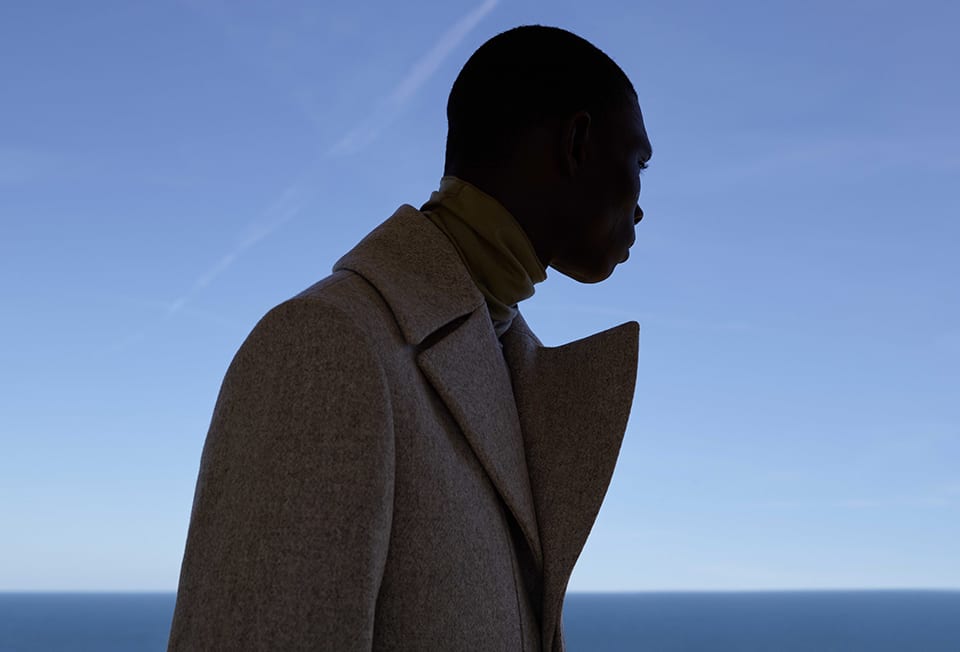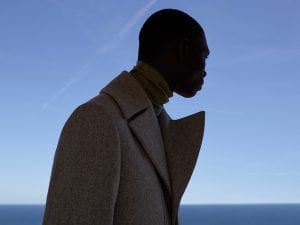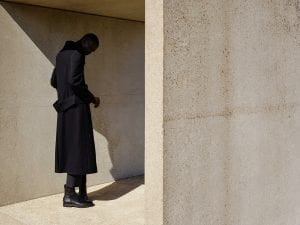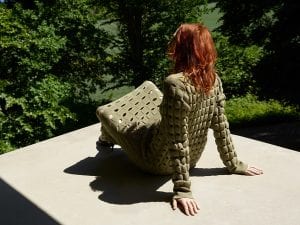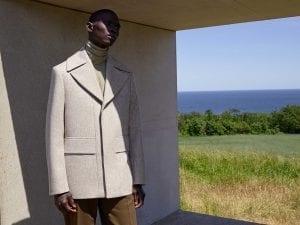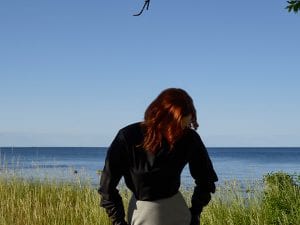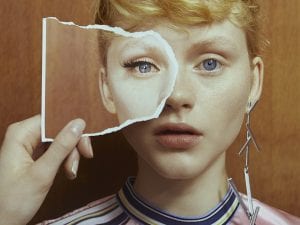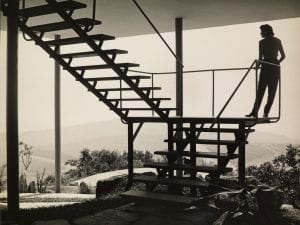Championing young artists, architects and designers, the brand extends its aesthetic to the wider sector, acting as a gallery space for new visionaries.
If you have attended a gallery opening or fair in recent years, you are, perhaps even unconsciously, familiar with COS. The London-based label seems to be dressing an entire cohort of curators and editors in clean-lined, well-tailored garments, described as “reinvented classics with timeless, functional and tactile design.” COS has undoubtedly infiltrated the art world – but in more ways than one.
Founded in 2007 by Hennes & Mauritz – the Swedish retail behemoth behind H&M – COS (Collection of Style) was envisioned as a new approach to sharp, casual dressing. In extension to selling clothes, however, the company has embedded itself into the cultural sphere, contributing to the wider cycle of exhibition, presentation and curation – pushing the boundaries of conventional artistic platforms. Since 2010, the brand has partnered with major institutions and practitioners on a stream of projects, spanning large-scale installations at world events down to launching small capsule collections designed around form, concept and narrative.
Running the show is Swedish-born Karin Gustafsson, the current Creative Director. Gustafsson has been with COS since it was first founded, having been scouted during a graduate show at the Royal College of Art. She took on the position of Assistant Designer, moving up to Womenswear head in 2011. Finally, in 2016, she was tasked with the vision and undertaking of COS’s external projects, a core strand of the label’s work. “We look at collaboration as a celebration,” she describes of her current role, where inviting others into the process is key to reinventing the wheel for breaking into the sector.
The notion that fashion can be part of wider talent development has become ingrained into the company’s timeline, with its first foray into the art world occurring in 2010, when the brand partnered with Frieze for the fair’s Frame section, dedicated to young, emerging visionaries. Dipping its well-heeled toes into the industry’s waters, this was a starting point for COS, as it launched commissions and aligned itself with a group of people who were similarly interested in culture, finance and politics and how these elements feed into the clothes we wear from day to day. “Our practice is deeply influenced by the work of others,” says Gustafsson, “it’s a way of giving back to those who have so inspired us.”
Spurred on by success with Frieze, COS soon began working directly with other well-known figureheads. The first of these projects came about in 2012, when the collective partnered with German artist Carsten Nicolai – best-known for his work with soundwaves – on an installation in Berlin. After this, the brand threw support behind exhibitions at Palais de Tokyo, Paris, as well as a presentation of Donald Judd’s works at 101 Spring Street, New York (2015). After this, the company rallied architect André Fu to create an installation in Hong Kong with the launch of the Autumn / Winter 2015 collection.
From this point on, the campaigns only grew in breadth and popularity. In 2015, COS teamed up with New York-based Snarkitecture – a duo whose practice sits on the spectrum of art and architecture. “We first worked with Daniel Arsham and Alex Mustonen for Salone del Mobile, after being inspired by their works at Design Miami and Art Basel,” describes Gustafsson. In 2012, Snarkitecture had produced a larger-than-life inflatable pavilion in Miami, putting itself on the world stage for joyously fun, interactive projects. For the Milan event, 100,000 metres of white ribbon were installed within the roof of a gallery; undulating clusters of woven material resembled stalactites hanging from a cave roof, blending the natural with the artificial. The project was a huge success. Instagram feeds across the world were littered with waves of white fabric, smiling faces and, of course – underneath the likes, shares, follows and comments – the circulated COS image.
Dynamic and performative environments have proven popular in the evolving world of social media engagements (consider Kusama’s Infinity Rooms), and this sensibility has not gone unnoticed. Gustafsson notes: “Snarkitecture’s unexpected approach focuses on the viewer’s experience and memory, achieving moments of wonder and interaction.” Indeed, the label would work with the duo later that year on an LA-based pop-up, then again in 2017 on a project entitled Loop. For this, a rollercoaster-like track of lilac-coloured metal was attached to the roof of a Seoul gallery, shooting glass balls down into an adjoining room where they piled up in satisfactory lines. The installation merged the technical and formal sensibility of COS’s clean lines with Arsham and Mustonen’s innovative playgrounds; each ball followed a carefully constructed path into a mathematical heap, much like the threads that are woven together in fabrics.
Moving research further into contemporary structures, the annual Milan furniture fair also became a major asset for COS’s portfolio in 2016, commissioning Japanese architect Sou Fujimoto (b. 1971) for an installation entitled Forest of Light. The work took the form of a darkened space illuminated by towering beams that responded to visitors’ movements. Fujimoto, well-known for materialising the concept of ‘found architecture’, is a practitioner focused on exploring the natural landscape and the changing needs of humanity. He notes: “Creating architecture is like planting seeds. When we design, we play close attention to the context of the site, the requests of our clients and the historical backgrounds of each community. If what we call ‘future’ is defined as a series of possibilities, I would say that the small proposals that stimulate them are the ‘seeds of the future.’” In the context of Forest of Light, COS and Fujimoto poignantly pick up on what consumers are craving in the 21st century: to find something truly original whilst being a part of the collective experience. Bringing viewers back into their body and out of the digital world, the interactive landscape encouraged audiences to consider their physical experience.
In the same vein, 2017 marked the year that COS collaborated with London-based Studio Swine on New Spring, an immersive, multi-sensory exhibition. Set in a former theatre, the duo installed a minimalist, life-sized tree rendered in white metal. Its branches slowly released blossom-like bubbles filled with a perfumed white mist, dissipating when touched. The project was an undeniable success and went on to win the Milan Design Award for Best Engagement. Again, images of the project ricocheted across digital feeds, and lines snaked around the building. The piece was re-exhibited in October 2018 at the Changning Bell Tower, Shanghai.
Tethering itself to large-scale influencers and inviting viewers into stimulating landscapes, COS has produced a winning equation where user-led environments attract viral popularity. “There are intrinsic links between fashion and design with regards to function and form,” Gustafsson explains of this collective approach. “Whilst this synergy has always been strong, it is becoming more collaborative over time, through direct partnerships and the sharing of inspiration with regards to materials, processes or techniques.” These projects ultimately exist as a branding exercise, and the COS logo remains ever-present; what sets the collective apart is that it places focus on the artist, rather than the label. COS acts as a commissioning body in the tradition of a museum or gallery, allowing the practitioners to have total creative control.
Though there are overlaps in terms of aesthetic – minimal, clean, tactile – the featured practitioners are allowed free reign to realise their work, not just offered settings for the showcase of new products. “COS provides an open brief to commissions and gives them ‘carte blanche’ for audience experiences that embody a shared sensibility and exploring its boundaries,” Gustafsson explains. “Our programme of collaborations is about giving back. It’s exciting for us to make art more accessible and bring it to a wider audience.”
The community-led ethos has also fed into a number of capsule collections. In 2016, COS partnered with the Guggenheim Museum, New York, for their retrospective of American painter Agnes Martin (1912-2004). Lightly sketched grids, inspired by Martin’s abstract canvases, were printed on dresses and shirting. “Our clothing and accessories are made to be striking in their simplicity, elegance and structure. Often the process of inspiration and refinement begins and ends with cues from artists that are distilling form, colour and light down to its essence in interesting ways.”
In this way, design – for COS – is as much about idea generation as it is communicating fashion ideals and wearable clothing. “As we research, brainstorm, and begin to form our ideas,” says Gustafsson, “our mood boards are constantly filled with architects, photographers and sculptors across disciplines.” Most recently, the Autumn collection, shot by Viviane Sassen at the Kivik Art Centre in Österlen, Sweden, is one such example of this. “The garments explore innovative materials and shapes whilst referencing natural and metropolitan environments,” she explains. “These themes were inspired by the likes of Jill Bliss, who draws upon the unlikely medium of local plants and mushrooms, and American painter Georgia O’Keeffe. We were also inspired by Christien Meindertsma’s work, refining raw materials.”
The choice of setting was deliberate, too: “The centre is in synergy with the key directions that underpin the season: sculpted forms and textural contrast. Where organic horizons meet concrete creations, the fibrous natural cottons meet reproportioned garments in technical fabrics.” Sassen’s signature and well-rehearsed aesthetic leads the collection’s visual identity also; bold, block palettes, clean skylines and uncanny shadows build the clothes into fine art photographs, as opposed to straight campaigns.
So what does this mean for fashion as a cultural empire? Can clothes, in fact, contribute to the wider business of art through a fine-tuned understanding of consumer demand, curated feeds and exhibition programming? In a period where creativity and commerce are becoming intrinsically linked, COS leads by example and spearheads the next generation of talent, whilst tapping into the needs of the individual. “Emerging practitioners are vital in bringing new ideas to the industry,” explains Gustafsson, “so for us, it’s important to support where possible. We hope to continue to grow, evolve and stay innovative whilst continuing to collaborate across the many disciplines that give meaning to today.”
Laura May Todd


